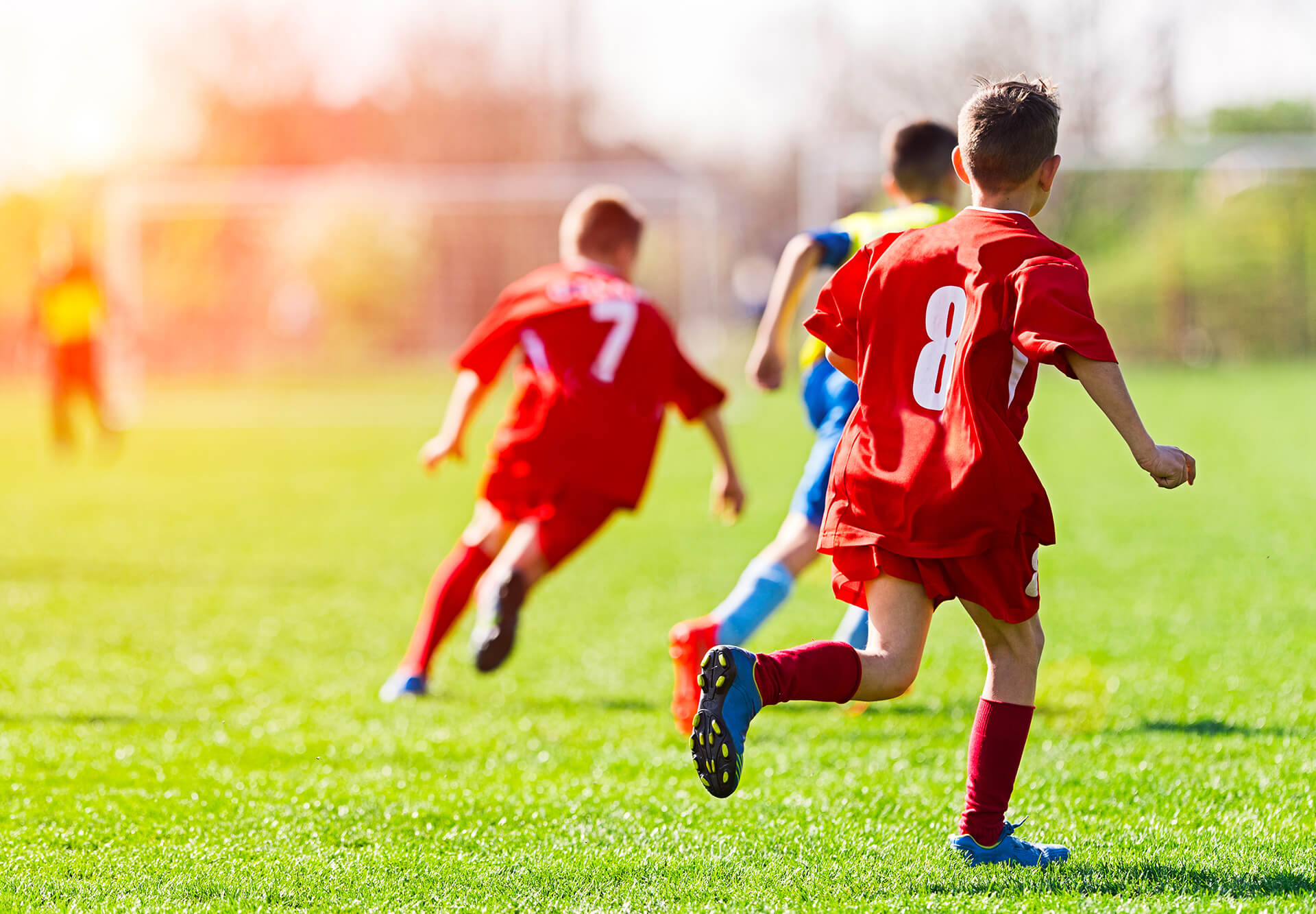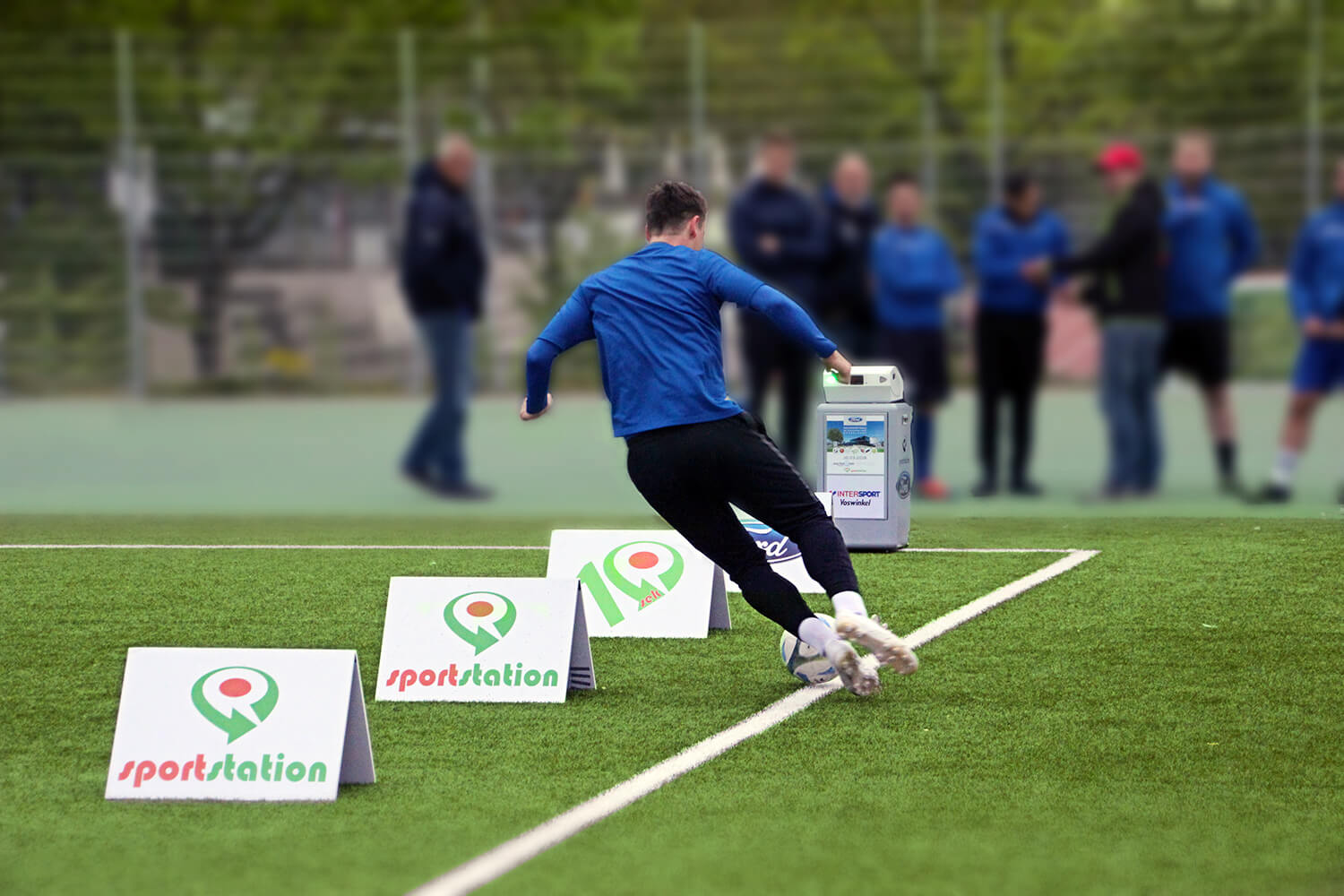Jun 27, 2018
Making Fitness Fun with sportstation
Whether it’s soccer or tennis — fun and success motivate many people to play sports. VDM28 series distance sensors are now giving aspiring athletes a boost. With Pulse Ranging Technology (PRT), they help detect how fast a run or dribble on a training course was finished and which improvements were made over the last session.

What do a record-breaking 100 meter sprinter like Usain Bolt and a soccer player like Arjen Robben have in common? An awe-inspiring running speed of 37 km/h! And if this result recorded by FIFA was not already impressive enough, it's even more astounding to hear that Robben reached this speed after having already played 80 minutes of soccer.
Somersaults Are Yesterday's News
Among track athletes and soccer players alike, many professional sports careers are forged in early childhood. The players fighting for points at the World Cup in Russia know this all too well. From a young age, speed, endurance, and coordination have all been part of their training schedules. And yet it is precisely these motor skills that are not being sufficiently developed among children today. This report comes from someone who should know: tennis coach Wolfgang Paes. The 48-year-old realized early on that social and technological change has made it more likely for kids to spend their time playing video games than being active outside. "As a teacher, I've really noticed that it is difficult to inspire children with tennis training alone." So the father of five developed the sportstation, a device that makes it fun to train motor skills. The device is based on "Speed4"—an application that the technology-loving tennis player had found success with well before launching the sportstation.
A New Spin on Gym Class with Sensors
In 2014, Paes started looking for a technology provider that could supply the sensors required for his sportstation device—and eventually came across Pepperl+Fuchs. The company supplies the photoelectric sensors used in the sportstation. The functionality is complex and yet quite simple: A front laser and two lateral photoelectric sensors form three axes. Using these axes, any number of measuring points can be specified in a particular sequence—allowing virtually any training course to be defined. The best part of the concept is that routes and games can be implemented quickly and easily in a gymnasium or open space. Easy to set up and intuitive to operate, the sportstation makes exercise fun for everyone--even during gym class. "In terms of physical activity, there is no comparison between today's children and those from previous generations. Unfortunately, smartphone apps and game consoles often train only their thumbs. In order to inspire kids, we need more than just a standard sport curriculum," explains Paes. And this is where the sportstation comes in, introduced to the market using Pepperl+Fuchs photoelectric sensors.
Improving Coordination and Inspiring Motivation
"The collaboration is now much more than just business for me," Dragon concludes. "The initial business partnership and the search for the perfect photoelectric sensor has turned into a friendly partnership." More often than not, the customer, Wolfgang Paes, and Sales Engineer, Patrick Dragon, finished off their meetings with a race on the course. A feel for the ball and coordination are (unfortunately) no longer intuitive skills for many children today. For someone like Dragon who spent his youth on the field, this fact is motivation enough. And this is the key point for Paes: "Anyone trying to motivate children today must quickly deliver a sense of achievement. Using the sportstation, you can immediately print out your results after your run—with or without a ball." This is sufficient encouragement to try and improve your time, whether that takes the form of beating your classmates or trying to get faster every time. And the positive side effect is getting active, improving coordination, and developing a better feel for the ball. "There are no limits to the course design," explains Paes. It is this feature that makes the sportstation with the Pepperl+Fuchs sensors a versatile device for the gym classes or training sessions of the future.
Vision for the Future: 100,000 Rental Units in Schools
Paes is currently in talks with the German government about his vision for the future: Within the next five years, he plans to provide 100,000 devices on long-term rental contracts to schools. To establish a sustainable model that works on a long-term basis for everyone involved, the team is considering whether to eventually replace the VDM28 with a different sensor from Pepperl+Fuchs. According to the team, there are new alternatives that would be able to fulfill the tasks of the sportstation just as reliably but at a lower cost. Ultimately, Pepperl+Fuchs and Paes agree that having fun while staying active and healthy should not be about money. "It is important that our children start having more fun being active again," says Paes. Ex-soccer player Patrick Dragon is in full agreement: "Whenever I become a father, it would be fantastic if the sportstation were part of the standard equipment in schools. Then I would show them the printout with my first running results and say: 'here's what it looked like when your dad helped develop it'."

